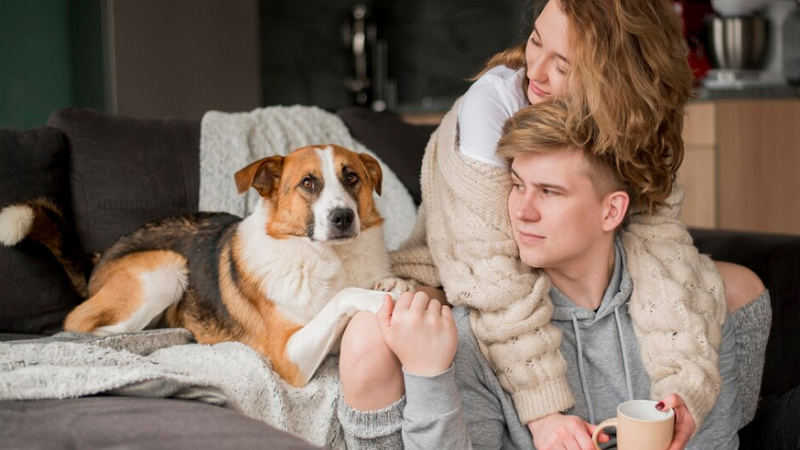Having a well-behaved dog is every pet owner’s dream. A polite pooch not only makes life easier but also enriches your relationship with your furry friend. In today’s fast-paced world, ensuring your dog is well-trained can prevent unwanted stress and set a foundation for a harmonious life together. This guide explores the key elements to help you transform your pup into a mannerly companion.
The Importance of Training for a Well-Behaved Dog
Training your dog is more than just teaching it to sit or stay; it’s about setting boundaries and developing mutual respect. When a dog understands what’s expected, it becomes more confident and secure. This confidence translates into better behavior both at home and in public settings. For dog owners, a trained pet means fewer worries and more enjoyable interactions with both the pet and fellow humans.
Think of training as an investment. The time and effort you put into it today will save you from potential frustrations tomorrow. Not only will your dog thrive with clear communication, but your bond will also deepen. Dogs are social creatures that flourish when they understand and meet expectations, making training a fundamental aspect of pet ownership.
Understanding Your Dog’s Behavior From Paws to Tail
Dogs communicate in ways that often go unnoticed by pet owners. Understanding these signals is crucial to effective training. Every wag, bark, or growl carries a specific meaning. For instance, a wagging tail doesn’t always indicate happiness—it can also signal anxiety or apprehension. Observing your dog’s body language closely can reveal insights into its emotional state and needs.
Dogs, like humans, have their personalities. Some are naturally more independent, while others crave constant companionship. Identifying your dog’s unique traits can help tailor your training approach. If your dog tends to be more anxious, a calm and patient method may work best. Conversely, a more outgoing dog might respond better to energetic and playful training sessions.
Be observant of changes in behavior. Modifications may indicate unmet needs or environmental stressors. Whether it’s a change in routine, new family members, or even diet, various factors can impact your dog’s demeanor. By tuning into these signals, you can address issues proactively and adjust your training methods accordingly.
Basic Commands Every Dog Should Know
The foundation of any well-mannered dog lies in a few basic commands. Teaching commands like “sit,” “stay,” “come,” and “leave it” equips your dog to behave appropriately in varied situations. These commands enhance safety both for your pet and those around it. For example, a reliable “stay” can prevent your dog from running into traffic or approaching dangerous areas.
Begin with short, clear commands. Dogs respond best when commands are concise and consistent. Use a firm, friendly tone to convey authority without intimidation. Repetition is key; regular practice sessions reinforce learning and help your dog retain these commands over time.
Introduce commands gradually. Start with one or two and ensure your dog understands and responds reliably before moving on to the next. Reward with treats or praise to encourage positive associations with the action. Patience and persistence will yield the best results, turning these commands into second nature for your canine companion.
Positive Reinforcement Techniques for Training
Positive reinforcement is a powerful tool in dog training. Rewarding desired behavior increases the likelihood of repetition, creating a cycle of positive actions. Treats, verbal praise, and affection are excellent motivators. When your dog performs a task correctly, a quick reward communicates that it did well and encourages similar behavior in the future.
Timing is critical in positive reinforcement. Rewards should be given immediately after the desired behavior to create a strong association. Delayed rewards can confuse, as your dog might not connect the reward with the behavior you wish to reinforce. Consistent application of this technique ensures your dog knows exactly what is expected.
Avoid negative reinforcement. Punishing unwanted behavior can lead to fear and anxiety, undermining training efforts. Instead, ignore undesirable actions and redirect your dog’s attention to appropriate behaviors. Celebrating successes and focusing on encouragement fosters a positive learning environment that benefits both you and your pet.
Socializing Your Dog: The Key to a Polite Pooch
Socialization is essential for a well-rounded dog. Exposing your pet to different people, animals, and environments helps develop confidence and adaptability. Early socialization reduces the risk of fear-based behaviors and aggression, making interactions with strangers and other dogs smoother and more predictable.
Start socialization early. Puppies are most receptive between three and twelve weeks. Introduce them to diverse experiences during this critical window, such as meeting different people and visiting various places. These experiences improve your dog’s comfort level in new situations and minimize anxiety.
Consistency is vital. Regular exposure to different environments helps reinforce positive experiences. Frequent visits to parks, pet stores, or simply walking in different neighborhoods can significantly enhance your dog’s social abilities. Remember, successful socialization requires patience and positivity, laying the groundwork for a poised and well-mannered pooch.
Handling Common Behavioral Issues
Even well-trained dogs can exhibit behavioral problems. Addressing issues like barking, chewing, or digging requires understanding and patience. Many behaviors stem from unmet needs or anxiety. Identifying the root cause is essential to finding effective solutions.
Provide ample physical and mental stimulation. Boredom is a common cause of troublesome behavior. Engage your dog with regular exercise and interactive toys to keep it entertained and content. A tired dog is often a well-behaved dog, as it has less energy for disruptive activities.
Seek professional help if necessary. Persistent issues may require guidance from a professional dog trainer or animal behaviorist. These experts can offer tailored strategies and insights that address specific concerns. Remember, resolving behavioral issues takes time, so stay patient and consistent with your efforts.
Advanced Training Tips: Incorporating Professional Dog Training
Once basic training is established, advanced techniques can further enhance your dog’s abilities. Engaging a professional dog trainer, such as those in Salt Lake City, offers personalized assistance. Trainers provide specialized knowledge and strategies, particularly useful for tackling complex behaviors or honing advanced skills like agility or obedience competitions.
Research and select a reputable trainer. Look for certified professionals with experience and positive reviews. An effective trainer will work collaboratively with you, ensuring training aligns with your goals and your dog’s needs. Attend sessions and actively participate to maximize the benefits of professional guidance.
Continue practicing at home. Reinforce lessons learned in training sessions with regular practice. Consistency in applying these techniques ensures your dog retains new skills and behaviors. Collaborate with your trainer to develop a practice routine that fits your schedule and supports your dog’s growth.
The Role of Consistency in Training Success
Consistency is the backbone of successful dog training. Dogs thrive on routine and predictability, making consistent commands and rewards crucial. When guidelines are clear and unwavering, your dog learns quickly and reliably. This reliability fosters trust, strengthening your bond and enhancing training effectiveness.
Establish a training schedule. Dedicate time each day to practice commands and skills. Short, frequent sessions are more effective than infrequent, lengthy ones. Consistent training maintains momentum, helping concepts stick and reducing frustration for both you and your dog.
Involve all family members. Consistency extends beyond your efforts alone. Ensure everyone interacting with your dog uses the same commands and adheres to training guidelines. Unified approaches prevent confusion, facilitating a harmonious environment where your dog feels secure and understands expectations.
Conclusion
Training a polite pooch requires dedication, patience, and love. This investment in your dog’s behavior results in a happier, more fulfilling relationship. By understanding canine behavior, employing positive reinforcement, and maintaining consistency, you build a foundation for lifelong learning and companionship.



